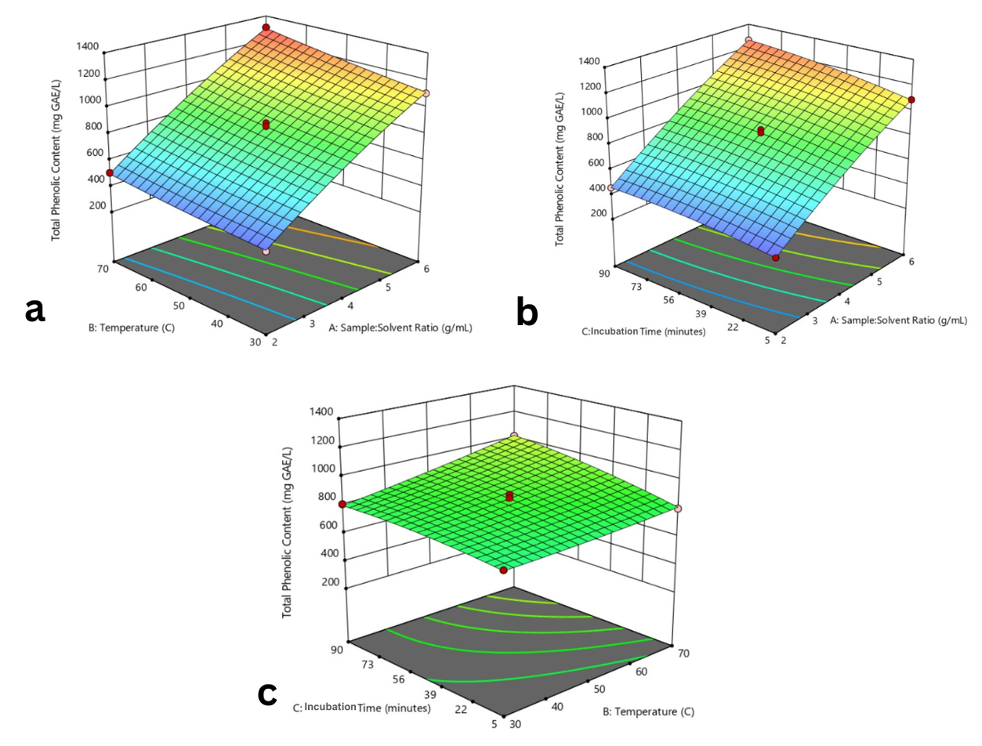VOLUME 17 NUMBER 2 (July to December 2024)

SciEnggJ. 2024 17 (2) 245-256
available online: October 31, 2024
DOI: https://doi.org/10.54645/2024172IOD-33
*Corresponding author
Email Address: smduque@up.edu.ph
Date received: April 26, 2024
Date revised: June 27, 2024
Date accepted: August 12, 2024
ARTICLE
Valorization of cocoa bean shell waste through sustainable extraction of phenolics: Process optimization and characterization
and Food Science, University of the Philippines Los Baños,
Laguna 4031, Philippines;
2Natural Products Development Program, University of the
Philippines Los Baños, Laguna 4031, Philippines
This research aimed to optimize and characterize the phenolics extraction from cocoa bean shells (CBS), a cocoa processing byproduct. Seven factors were studied, including (1) temperature: 30–70 °C, (2) extraction time: 5–90 minutes, (3) solvent pH: 2–12, (4) sample to solvent ratio (SSR): 0.020–0.060 g/mL, (5) concentration of solvent water/ethanol 0–75%, (6) sonication time: 10–60 minutes, and (7) agitation: 0–200 rpm. The Plackett-Burman (PBD) and Box-Behnken design (BBD) of experiments were utilized to establish the significant extraction parameters and their optimum levels, with total phenolic content (TPC) as the response parameter. The model generated was validated and the optimized CBS extract was characterized for its bioactive and antioxidant activities. Results showed that three parameters (extraction time, incubation temperature, and SSR) significantly impacted the extraction of phenolics from CBS. The optimum condition for extraction of phenolics from CBS was achieved with the use of 0.060 g/mL SSR and extracts incubated at 30 °C for 5 minutes. Additionally, the optimized CBS extract was determined to possess considerable quantities of bioactive compounds (total flavonoid content = 13.83 ± 0.84 mg CE/g; TPC = 10.86 ± 0.22 mg GAE/g), and exhibit antioxidant activity (ABTS●+ = 23.76 ± 0.59 mg TE/g). This research leverages the capability of CBS as a valuable pool of bioactive compounds with significant antioxidant capacities. The developed method for phenolic extraction from CBS is both environmentally friendly and economically viable, and presents a promising prospect for industrial application due to its efficiency and sustainable processing conditions.
© 2025 SciEnggJ
Philippine-American Academy of Science and Engineering